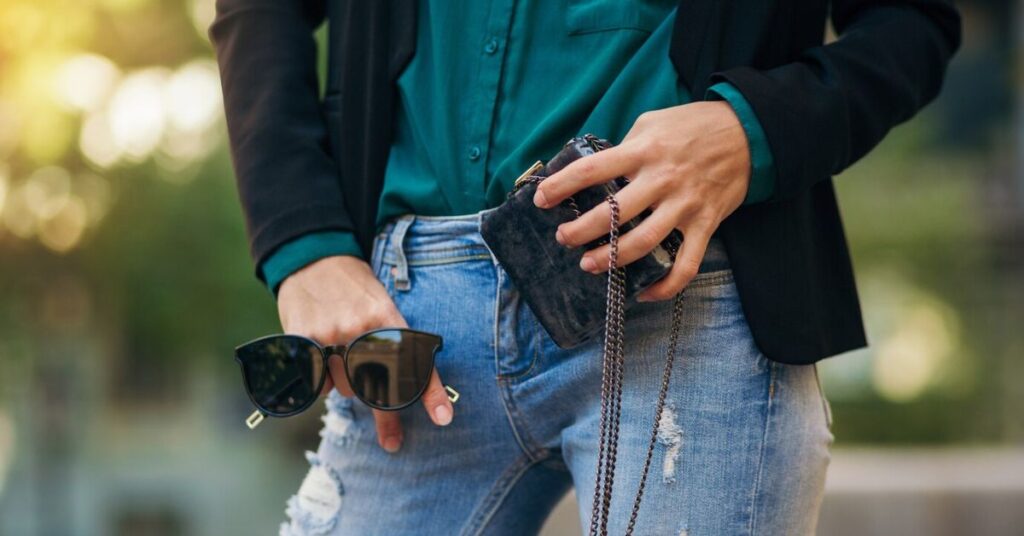Ever put on a silver chain, add a pendant, and something just feels… off?
Maybe the chain’s too thick, the pendant’s too big, or they just don’t sit right together.
We’ve all been there.
A silver chain with a pendant can take your outfit from basic to polished. But get it wrong, and it just looks messy.
So, how do you get it right?
This guide breaks it down—choosing the best men’s silver chain, picking the right pendant, layering without looking overdone, and avoiding rookie mistakes.
If you’re ready to level up your chain game, keep reading.
- Choosing the Right Silver Chain for a Pendant
Not every silver chain works with every pendant.
Pick the wrong one, and the whole look falls apart.
Too thin? The pendant overpowers it.
Too thick? The pendant looks lost.
Here’s how to match your chain to your pendant like a pro.
1.1 Pick the Right Thickness
The chain needs to support the pendant without looking off-balance.
- Thin chains (1-2mm):Best for lightweight pendants like small dog tags or minimal designs.
- Medium chains (3-5mm):The sweet spot—works with most pendants, from classic crosses to statement pieces.
- Thick chains (6mm+):Only pair with big, bold pendants. Otherwise, the chain overpowers the look.
? Rule of thumb: The heavier the pendant, the thicker the chain.
1.2 Choose the Best Length
Where the pendant sits on your chest changes the vibe.
- 18″-20″ (Short):Keeps the pendant close to the neckline—good for a subtle, everyday look.
- 22″-24″ (Mid-length):The most popular length—sits at the middle of your chest, noticeable but not overpowering.
- 26″+ (Long):Bold and eye-catching—ideal for statement pendants.
? Tip: If you’re layering, go for different lengths (e.g., 20” + 24”) to keep the chains from tangling.
1.3 Choose the Right Chain Style
Not all silver chains handle pendants the same way.
- Snake chains:Sleek, modern, and smooth—perfect for simple, minimal pendants.
- Rolo chains:Classic and durable—works with almost any pendant.
- Anchor Chain: Masculine and strong – perfect for adding a rugged touch.
- Box chains:Square links make them strong and stylish—good for heavier pendants.
- Wheat chains:Braided design adds texture—best with sophisticated designed pendants.
? Best all-rounder? Rolo and anchor link chains. They’re strong, stylish, and work with most pendants.
- Picking the Right Pendant for Your Chain
Got the right chain? Good.
Now, let’s talk pendants.
The wrong pendant can throw everything off—too heavy, too big, or just clashing with the chain.
Here’s how to choose a pendant that actually works.
2.1 Get the Size & Weight Right
The chain needs to support the pendant, not struggle under it.
- Small pendants (1-2cm):Best for thin chains (1-2mm). Think subtle dog tags, bars, or small symbols.
- Medium pendants (2-4cm):Works with most chains (3-5mm). Classic crosses, coins, or geometric designs.
- Large pendants (4cm+):Needs a thicker, sturdier chain (5mm+). Heavyweight designs, detailed symbols, or statement pieces.
? Rule of thumb: The bigger the pendant, the stronger the chain.
2.2 Choose a Pendant Style That Fits Your Look
Your pendant says a lot about your style. Pick one that matches your vibe.
- Minimalist (bars, small tags, geometric shapes):Clean, modern, and easy to wear daily.
- Classic (crosses, coins, initials):Timeless and versatile—good for both casual and dressy outfits.
- Bold (skulls, daggers, symbols):Statement pieces that stand out—great for streetwear or rugged styles.
- Custom (engraved names, coordinates, meaningful symbols):Personal and unique—tells a story.
? Tip: If you wear multiple pendants, balance them. One bold piece + one smaller pendant = a solid mix.
2.3 Match Your Pendant to Your Outfit & Occasion
A chunky skull pendant with a suit? Doesn’t work.
A sleek bar pendant with a casual tee? Perfect.
- Casual outfits (T-shirts, hoodies, streetwear):Most pendant styles work. Go for mid to long-length chains (22”-26”).
- Smart casual (button-downs, knitwear, jackets):Sleek and subtle—mid-length (20”-24”) with minimalist or classic pendants.
- Formal (suits, dress shirts):Keep it low-key (18”-22”) with a thin chain and a small, elegant pendant.
? Best everyday option? A 22” curb chain with a medium-sized pendant—versatile, stylish, and effortless.
- How to Layer Silver Chains with Pendants
One chain? Cool.
Two or three? Now you’re making a statement—if you do it right.
Layering silver chains with pendants can add depth, personality, and a sharp edge to your look.
But get it wrong—chains too close together, pendants clashing—and it’s just a tangled mess.
Here’s how to stack silver chains with pendants like a pro.
3.1 Layering Basics: Keep It Balanced
The key to layering? Contrast.
Mixing lengths, textures, and pendant sizes makes it work.
- Start with a foundation chain (18”-20”)– A simple snake or curb chain sets the base. No pendant needed.
- Add a mid-length chain (22”-24”)– This is your main pendant chain. Keep it bold but balanced.
- Finish with a long chain (26”+)– If you’re going for three layers, this should be light and subtle, so it doesn’t overpower the look.
? Rule of thumb: At least 2” difference between chains. Stops them from tangling and keeps them distinct.
3.2 Mixing Chain Styles Without Clashing
All chains shouldn’t look the same. Layering works best with variety.
- Pair a smooth snake chain with a textured curb or rope chain– The contrast makes each chain pop.
- Avoid stacking thick chains– One thick piece + one medium + one thin = balance.
- Match metals– Stick with sterling silver for a clean, polished look. Mixing silver and gold? Risky, but if you do, keep one metal dominant.
? Best all-rounder? A 20” snake chain + 24” rope chain + 26” thin pendant chain. Simple, stylish, no overkill.
3.3 How to Layer Pendants Without Overdoing It
More than one pendant? It can work—but only if you space them out right.
- One pendant per chain = cleanest look.Anything more, and it starts looking cluttered.
- Vary pendant sizes– A larger pendant on the longest chain + a small one on a mid-length chain keeps balance.
- Match the vibe– Don’t mix a bold skull pendant with a tiny minimalist bar. Stick to one theme.
? Tip: If layering two pendants, keep at least a 4” length difference so they don’t overlap awkwardly.
- Common Mistakes to Avoid
Silver chains and pendants can upgrade your style instantly—but only if you avoid the mistakes that make them look messy, cheap, or just plain wrong.
Here’s where most guys go wrong—and how to fix it.
4.1 Overloading with Pendants
One pendant? Stylish.
Two? Maybe.
Three or more? Now you’re just weighing yourself down.
- One statement pendant per chain.If you’re layering, let one pendant be the focal point and keep the other chains plain.
- Avoid stacking multiple pendants on the same chain.They’ll slide together, look cluttered, and make a constant clicking noise (annoying).
- If you want two pendants, space them out.Different chain lengths stop them from clashing.
? Best move? A single, well-chosen pendant will always look better than a bunch of random ones.
4.2 Wrong Chain-Pendant Proportion
Ever seen a tiny pendant on a thick Cuban chain? Looks weird, right?
Or a huge pendant on a thin snake chain? Feels like it’s about to snap.
- Small pendants (1-2cm) → Thin to medium chains (1-3mm).Keep it subtle and refined.
- Medium pendants (2-4cm) → Medium-thickness chains (3-5mm).Balanced and versatile.
- Large pendants (4cm+) → Thick, sturdy chains (5mm+).Heavy-duty style needs heavy-duty support.
? Rule of thumb: Your chain should complement the pendant, not fight with it.
4.3 Ignoring Metal Consistency
Mixing metals can be done right—but most of the time, it just looks off.
- Stick to sterling silver.It keeps your look clean, polished, and put together.
- If you mix metals, be intentional.A silver chain + gold pendant can work if the pendant has silver accents.
- Avoid silver-plated or mixed-metal chains.They tarnish fast and clash with real sterling silver.
? Best move? Invest in solid sterling silver chains and pendants—no weird fading or cheap-looking plating.
4.4 Skipping Maintenance
Tarnished silver? Not a good look.
Dirty chains? Even worse.
- Wipe your chain and pendant after wearing.Removes sweat and oils that speed up tarnishing.
- Store silver chains in a dry place.Use a jewelry box or pouch to keep them from oxidising.
- Clean with a silver polishing cloth.Skip the harsh chemicals—just a soft rub keeps it shining.
? Lazy fix? Wear your silver often. The natural oils from your skin help prevent tarnishing.
Conclusion
A silver chain with a pendant isn’t just an accessory—it’s a statement.
Get the chain thickness, length, and style right, and your pendant will sit perfectly.
Layer smartly, avoid rookie mistakes, and your setup will look effortless instead of messy.
The good news? You don’t have to figure it all out yourself.
Our pendant necklace collection is already paired by designers for the perfect balance—no guesswork needed.
So whether you’re after a bold statement piece or an everyday classic, check out the collection and find your match.







